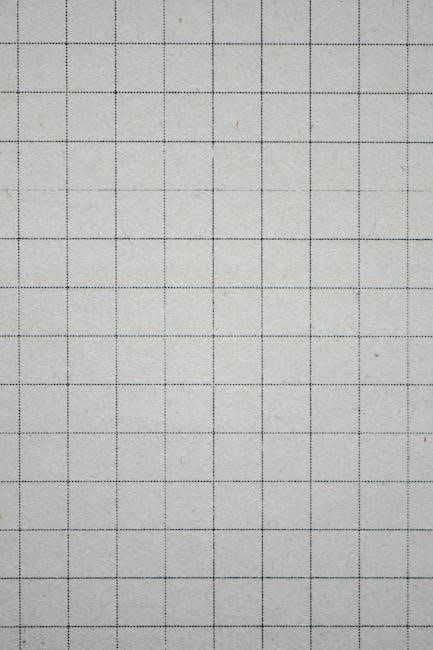
Anatomy and physiology are foundational sciences studying the structure and function of the human body․ They are essential for understanding how the body operates and maintains health․
1․1 Definition and Importance
Anatomy is the scientific study of body structures and their relationships, while physiology focuses on the functions of these structures․ Together, they provide a comprehensive understanding of the human body, essential for medicine, healthcare, and biological sciences․ Studying anatomy and physiology is crucial for grasping how the body maintains life and responds to internal and external changes․
1․2 Overview of Key Concepts
Anatomy and physiology explore the structure and function of the human body․ Key concepts include the levels of organization, from cells to systems, and the branches of anatomy, such as gross anatomy and histology․ Understanding these fundamentals is essential for grasping how the body operates, making them vital for healthcare professionals and students pursuing medical sciences․
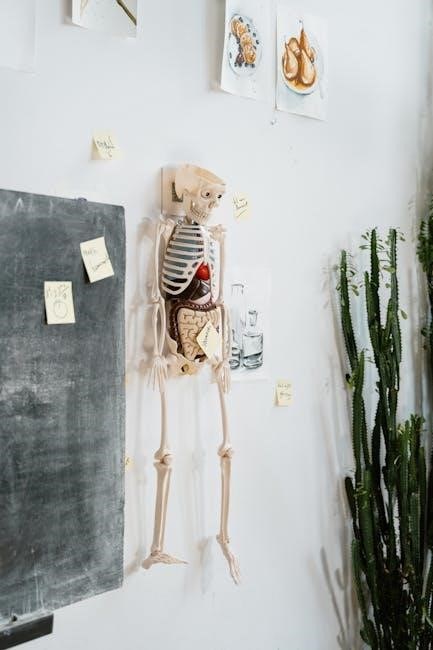
Branches of Anatomy
Anatomy is divided into branches like gross anatomy, histology, and cytology, each focusing on different structural levels, from visible organs to microscopic cells and tissues․
2;1 Gross Anatomy
Gross anatomy focuses on the study of large body structures visible to the naked eye, such as organs and bones․ It examines the external and internal morphology through dissection․ This branch is crucial for understanding spatial relationships and is foundational in medical and surgical training, enabling professionals to identify structures during procedures․
2․2 Histology
Histology is the study of tissues under a microscope, examining their cellular structure and organization․ It provides insights into how cells group together to form tissues, which are essential for understanding organ functions․ This field is vital for diagnosing diseases and comprehending tissue repair mechanisms, making it a cornerstone in medical education and pathology․
2․3 Cytology
Cytology is the study of cells, focusing on their structure, function, and behavior․ It examines cells under a microscope to understand their roles in health and disease․ This field is crucial for identifying cellular abnormalities, such as cancer, and understanding processes like cell division and differentiation․ Cytology is a vital tool in medicine and biological research, aiding in diagnostics and therapeutic decisions․

Levels of Organization in the Human Body
The human body is organized into levels: cells, tissues, organs, and systems․ These levels work together to maintain overall health and function effectively․
3․1 Cellular Level
The cellular level is the most basic structural and functional unit of the body․ Cells specialize to perform specific functions, forming tissues and enabling bodily processes․ Studying cell structure, such as organelles, and their functions is crucial for understanding how cells contribute to overall health and disease mechanisms․
3․2 Tissue Level
Tissues are groups of similar cells that work together to perform specific functions․ There are four primary types: epithelial, connective, muscle, and nervous tissue․ Each type has distinct roles, such as protection, support, movement, and communication․ Understanding tissue structure and function is vital for comprehending how organs and systems develop and operate, as well as how diseases arise at this level․
3․3 Organ and System Levels
Organs are structures composed of two or more types of tissues that perform specific functions․ Systems are groups of organs working together to achieve complex tasks․ The organ and system levels represent the integration of cells, tissues, and organs, enabling the body to maintain overall function and homeostasis․ This hierarchical organization is crucial for understanding how the body operates as a unified whole․
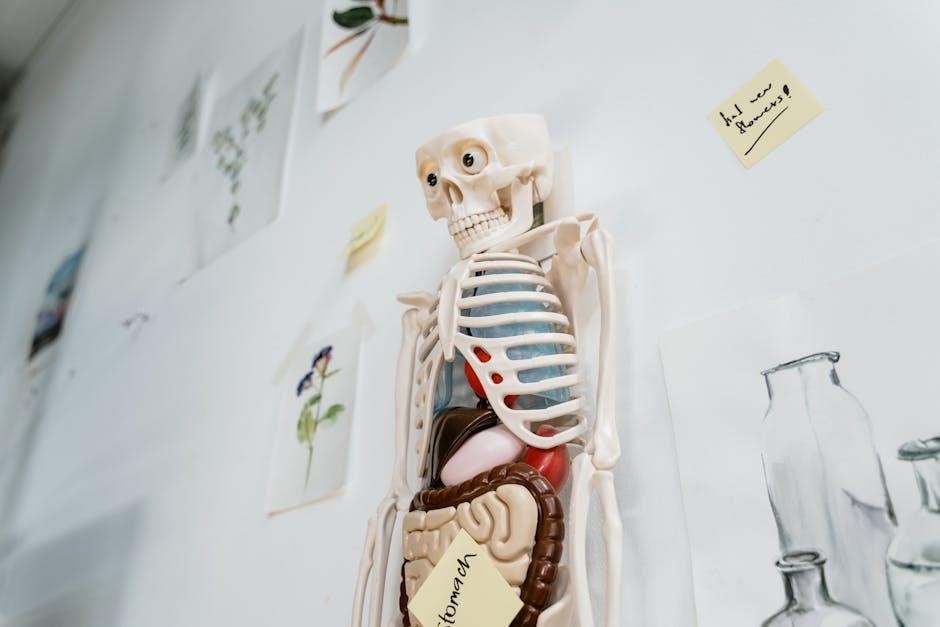
Anatomical Terminology
Anatomical terminology provides precise language to describe body structures and their locations․ Terms like superior, inferior, anterior, and posterior help clarify relative positions, enabling clear communication in medical and scientific contexts․
4․1 Relative Positions

Relative positions describe the location of body parts using specific terms․ Superior refers to structures near the top, while inferior denotes those toward the bottom․ Anterior describes areas at the front, and posterior those at the back․ Medial indicates proximity to the body’s midline, and lateral signifies distance from it․ Proximal and distal describe locations closer to or farther from the body’s center․ These terms provide clarity in describing anatomical relationships, aiding precise communication in medical and scientific contexts․
4․2 Body Sections
Body sections refer to the planes and slices used to divide the body for study․ The sagittal plane divides the body into left and right, while the frontal (coronal) plane separates anterior and posterior․ The transverse plane divides the body into top and bottom․ These sections help visualize internal structures, aiding in diagnosis and education․ Key terms include midsagittal, parasagittal, frontal, and transverse, enabling precise anatomical descriptions and imaging․

Physiology of the Digestive System
The digestive system’s primary functions include ingestion, digestion, absorption, and excretion of nutrients․ Key organs like the mouth, esophagus, stomach, small intestine, and large intestine work together to break down food and absorb nutrients efficiently․
5․1 Functions of the Digestive System
The digestive system performs essential functions, including ingestion of food, mechanical and chemical digestion, absorption of nutrients, and elimination of waste․ It breaks down food into nutrients like carbohydrates, proteins, and fats, which are then absorbed and utilized by the body for energy, growth, and repair․ Proper digestion is crucial for maintaining overall health and bodily functions․
5․2 Key Organs and Their Roles
The digestive system includes key organs like the mouth, esophagus, stomach, small intestine, and large intestine․ The mouth initiates digestion with chewing and saliva․ The esophagus transports food to the stomach, where acids and enzymes break it down․ The small intestine absorbs nutrients, while the large intestine manages water absorption and waste formation․ The pancreas and liver support digestion by producing enzymes and bile․
Physiology of the Respiratory System
The respiratory system facilitates gas exchange, supplying oxygen to the blood and expelling carbon dioxide․ It filters, warms, and humidifies air, supporting overall bodily functions․
6․1 Functions of the Respiratory System
The respiratory system performs critical functions, including gas exchange, where oxygen is absorbed into the blood and carbon dioxide is removed․ It also filters, humidifies, and warms the air we breathe, protecting the body from harmful particles and pathogens, while maintaining proper pH levels and supporting metabolic activities․ These processes are vital for overall health and survival․
6․2 Key Organs and Their Roles
The respiratory system includes the nose, trachea, bronchi, bronchioles, and lungs․ The nose filters and humidifies air, while the trachea serves as the main airway․ Bronchi and bronchioles direct air to the lungs, where gas exchange occurs in alveoli․ Each organ plays a vital role in ensuring efficient breathing and maintaining oxygen supply, making them indispensable for overall body function․
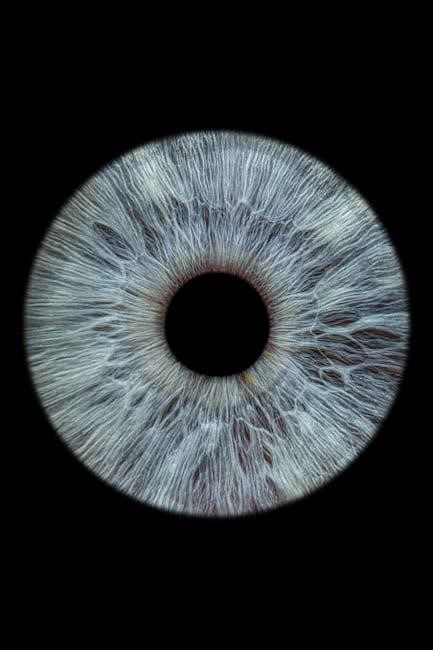
Physiology of the Circulatory System
The circulatory system transports oxygen, nutrients, and hormones while removing waste․ It consists of the heart, blood vessels, and blood, ensuring proper cellular function and overall health․
7․1 Functions of the Circulatory System
The circulatory system performs vital functions, including transporting oxygen and nutrients to cells and organs, removing waste products, and regulating body temperature․ It also plays a crucial role in maintaining immune responses and enabling hormonal communication throughout the body, ensuring overall bodily functions operate efficiently and maintain homeostasis․
7․2 Key Organs and Their Roles
The heart is the central organ, pumping blood throughout the body․ Arteries transport oxygenated blood away from the heart, while veins return deoxygenated blood․ Capillaries enable nutrient and waste exchange with tissues; Blood itself carries oxygen, nutrients, and immune cells, playing a vital role in circulation and overall bodily function․
Importance of Using PDF Study Notes
PDF study notes offer portability, accessibility, and organized content, making them ideal for anatomy and physiology learning․ They provide comprehensive, high-yield information for medical students and professionals alike․
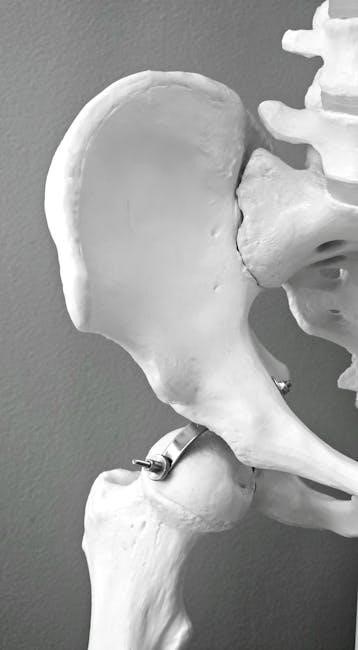
8․1 Benefits of PDF Format
PDFs offer unparalleled portability, allowing easy access to anatomy and physiology notes on any device․ They provide a clean, organized layout with images and text intact․ PDFs are searchable, enabling quick reference to specific topics․ They also support offline access, making them ideal for studying anywhere․ Their universal compatibility ensures consistency across all devices, enhancing the learning experience for students and professionals alike․
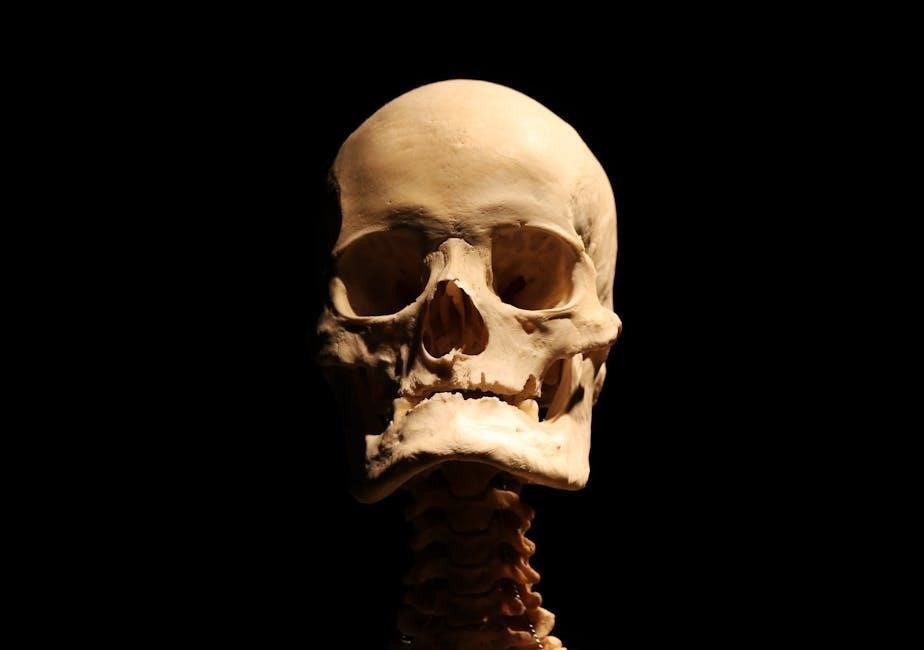
8․2 Best Sources for Anatomy and Physiology PDFs
High-quality anatomy and physiology PDFs are available from reputable sources like OpenStax, which offers free, peer-reviewed textbooks․ Medical websites specializing in study materials provide organized, high-yield notes․ Additionally, textbooks like “Human Anatomy and Physiology” by Elaine Marieb are widely recommended for detailed content․ These sources ensure comprehensive and reliable learning materials for students and professionals․
Effective Study Tips for Anatomy and Physiology
Engage in active learning by labeling diagrams and participating in group discussions․ Utilize visual aids like charts and videos to reinforce complex concepts and improve retention effectively․
9․1 Active Learning Techniques
Active learning enhances comprehension by engaging students directly․ Techniques include self-quizzing, teaching others, and participating in discussions․ Use flashcards to memorize terms and concepts․ Label diagrams to visualize structures and their functions․ Apply knowledge through practice questions and case studies․ These methods promote critical thinking and long-term retention, making complex topics more manageable and interesting․
9․2 Utilizing Visual Aids
Visual aids like diagrams, charts, and videos are invaluable for mastering anatomy and physiology․ They help students visualize complex structures and processes, enhancing comprehension and retention․ Labeling diagrams improves understanding of spatial relationships․ Videos and 3D models provide dynamic views of physiological processes․ Incorporating these tools into study routines makes learning interactive and more effective for visual learners․
Anatomy and physiology are vital sciences that uncover the body’s structure and function․ Studying these fields equips learners with essential knowledge for healthcare and beyond, fostering lifelong curiosity․
10․1 Summary of Key Points
Anatomy and physiology collectively explore the structure and function of the human body, emphasizing levels of organization, from cells to systems․ Key concepts include anatomical terminology, tissue types, and the roles of major systems like the nervous, circulatory, respiratory, and digestive systems․ Effective study tools, such as PDF notes and visual aids, enhance learning, while active techniques and interdisciplinary connections deepen understanding․
10․2 Encouragement for Further Study
Continuing to explore anatomy and physiology will deepen your understanding of the human body’s intricate systems․ Leveraging PDF study notes and online resources can enhance your learning journey․ Stay curious, as mastering these concepts opens doors to advanced studies and professional opportunities in healthcare and science․ Embrace lifelong learning to stay updated and proficient in this ever-evolving field․